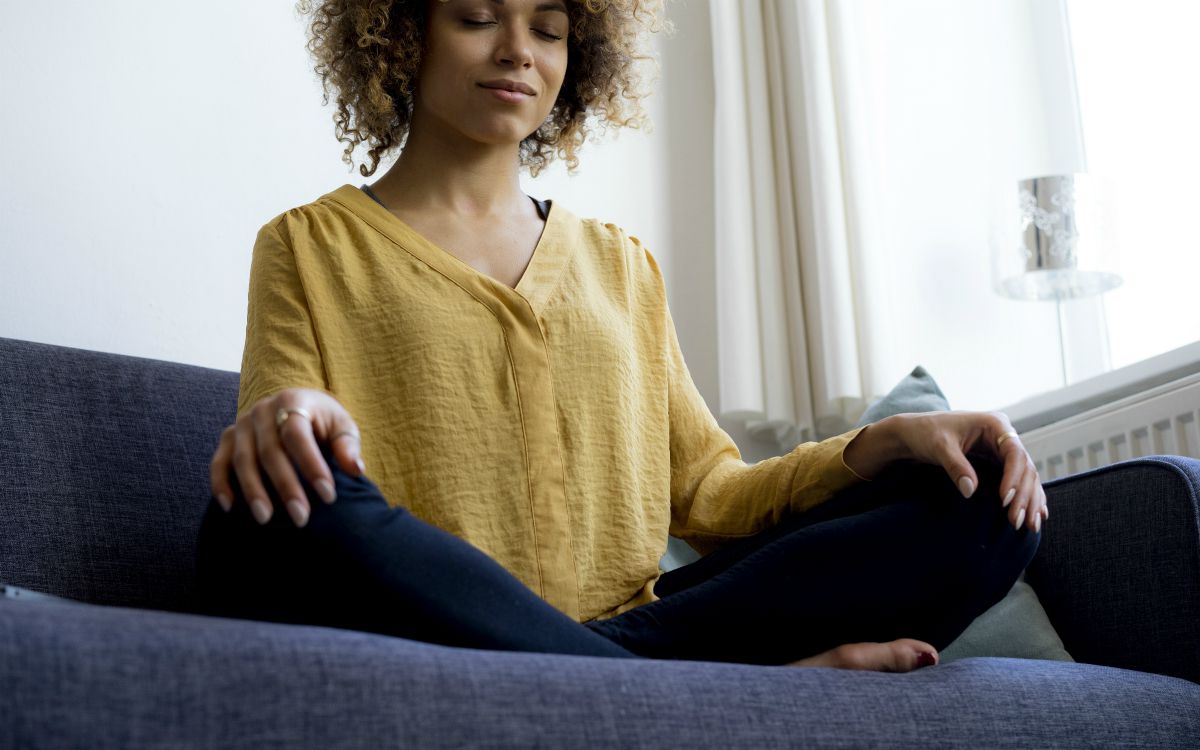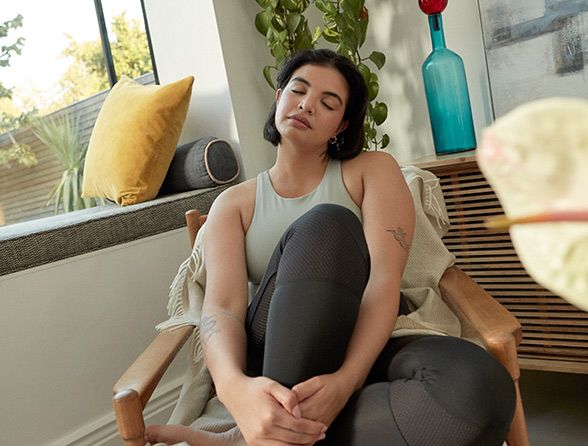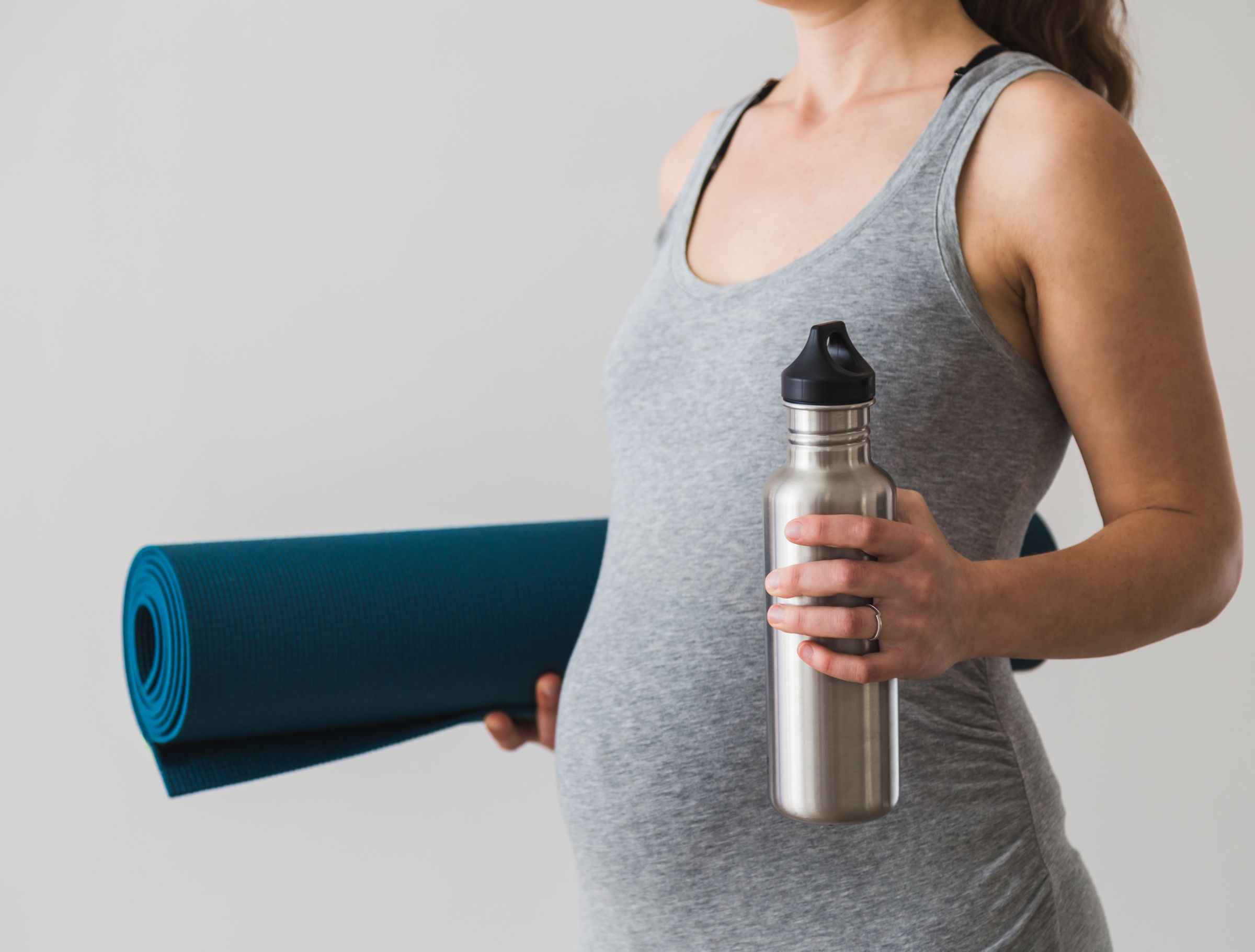The beginner’s guide to meditation
Sit down, take a breath and let our meditation experts guide you through your first steps
Sometimes, a little time out is just what you need. ‘When you’re dealing with heightened levels of stress and anxiety, meditation can help you tap into the calm and peace that lives within, find a state of clarity and return to the present moment,’ says Maddy Gerrard, head of partnerships & original content at meditation app Insight Timer. ‘It helps us to understand the mind, detach from thoughts and become more aware of our own feelings and reactions.’
‘As we are confronted by the very real changes taking place in the world around us, meditation can help us to navigate what’s going on internally,’ agrees Sarah Romotsky, director of healthcare partnerships at Headspace. ‘We may be experiencing a host of new thoughts and emotions, or finding it difficult to stay focused or motivated. Meditation is a tool that is proven to help people better manage difficult emotions.
‘When you’re feeling overwhelmed or distracted, you can use your breath as a tool to reset your mind and physiology. One session of Headspace can reduce mind-wandering by up to a quarter, while ten days can improve resilience, reduce stress and negative emotions, and increase happiness.’
1. Do it your way
‘There is no absolute right or wrong way to practise meditation and mindfulness,’ Romotsky assures us. ‘What might work for one person doesn’t always work for another – it’s all about balance, and most often the trick is in finding out what is right for you. Find a place where you can sit, still the body and allow the mind to come to a natural place of rest. It doesn’t matter too much if that’s on a chair, the floor or even your bed.’
You might choose to sit against a wall with a pillow under your knees for support, settle down on the sofa or lie on the lawn – simply listen to your body and pick a quiet place where you won’t be disturbed or distracted. ‘Your meditation space and posture might change from day to day,’ Gerrard adds. ‘What’s important is your intention to meditate. Once a short meditation of five, ten or even two minutes has become a habit, you can start to extend the duration.’
2. Start small
Once you’re sitting comfortably, set a timer. Romotsky suggests beginning with three minutes. ‘But you can start with as little as one minute a day, ideally building up to at least ten minutes over time,’ she says.
‘Start by taking deep, full breaths and exhaling slowly out of your mouth,’ she continues. ‘The simple act of focusing on your breathing, following the inhalations and exhalations, can help you unwind, reset and step away from the worried mind. Counting your inhalations and exhalations out loud can aid with the transition from faster breathing to slower, even breaths that promote relaxation. Observe the sensations this creates in your body, tracking the rise and fall of your diaphragm.
‘If your mind wanders from your breath, don’t worry – that’s completely normal. Notice new thoughts, but then let them go, bringing your attention back to the rise and fall of your chest. When you’ve completed three minutes, take a moment to feel proud of yourself and note how the process made you feel.’
3. Keep it going
Making time and space for meditation in your day-to-day routine is key. ‘We find that people who meditate in the morning or integrate their meditation into a consistent routine – same time, same place – are most likely to maintain their practice over time,’ says Romotsky.
‘Experiment with different times to see when meditation feels best for you,’ Gerrard advises. ‘When you find a time that works, commit to it each day. This will deepen your practice. Five minutes every day will have more impact than 30 minutes once a week. And if you miss a day, or even three, don’t fret. Simply set the intention to revisit the practice and pick up where you left off.’
A meditation app with a guided beginner’s course can offer added insight and help with motivation. Headspace’s free 10-day Basics course has set thousands of people off on their meditation journey, while Insight Timer’s free 7-day Learn to Meditate course comes highly recommended by users. ‘The course introduces people to the basic techniques and benefits of meditation, working with the breath, the mind, the body, and different emotional states in a series of easy-to-follow 15 minute lessons,’ Gerrard explains.
Expand your practice by exploring Headspace’s free Weathering the storm collection of meditation and mindfulness content, specially curated to help us find space and kindness for ourselves and those around us at this time. Insight Timer also has a collection of guided meditations – with more than 40,000 to choose from, it’s the largest free meditation library on earth.
4. Get the little monsters on board
Introducing children to meditation and mindfulness at a young age sets them up with tools they can use to keep calm, gain self-awareness and deal with uncomfortable feelings throughout their lives. To help out, Headspace have teamed up with Sesame Street to create six short, animated Monster Meditations. Designed to help kids learn the basics of meditation and mindfulness, the videos show how they can use simple mindfulness techniques, breathing exercises and sensory activities to manage difficult feelings and situations in everyday life.
‘Learning the fundamentals of mindfulness early in life is an incredibly valuable skill to foster, especially at a time like this,’ explains Headspace founder and former Buddhist monk Andy Puddicombe, who joins Cookie Monster, Elmo et al in the shorts. ‘It not only provides children with a greater sense of calm and clarity, but also helps cultivate the qualities of compassion, creativity and kindness.’
5. Take it further
When sitting to meditate for a few minutes each day has become a habit, you can begin to integrate the principles of mindfulness into other areas of your life. ‘During times of uncertainty, it’s important to prioritise your own wellbeing and take charge of the things you can control yourself,’ says Romotsky. ‘Now is a great time to establish healthy habits and routines, including mindfulness and breathwork. This could be as simple as taking a moment to pause and check in with yourself while washing your hands or making a cup of tea.
‘As you become more aware of your thoughts and feelings, you get better at noticing the early signs of anxiety or worry, which can help you stop them in their tracks, or simply understand that it might be time to take a mindful moment. Meditation also cultivates self-compassion, which helps us accept where we are and maintain our motivation.
‘When you experience a moment of frustration, acknowledge it, accept it, sit with it, focus on your breathing and bring your attention back to how you’re feeling and why. This will help you bring intention to your interactions and activities and make decisions from a place of greater awareness and clarity.’
In the long term a great way to deepen your meditation practice is with a residential retreat such as Vipassana Meditation’s free 10-day courses, which offer a deep dive into mindfulness of breath and body scan meditation techniques as taught in their original form. And while that might be something to think of for the future, while centres are closed, the Vipassana Research Institute is running live meditation sessions online. These take place at 2pm (UK time) on Saturdays and are open to adults and kids aged 10 and over.
Your meditation kit
Brora Cashmere Bed Socks
£109.00
Main image: Getty Images








